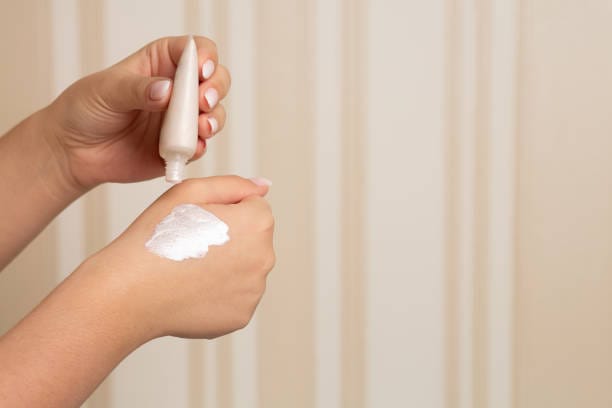
Skin tag removal is simple and effective; however, the key to achieving the best results lies in proper skin tag removal aftercare and taking good care of your skin. Aftercare with skin tag removal is essential for promoting skin healing, avoiding complications, and having silky smooth skin.
After removing the skin tag, the skin becomes sensitive during healing. If you do not take proper aftercare, you risk Disease, scarring, or delayed healing. Fortunately, your skin will heal beautifully with appropriate treatment, and the removed tag will barely leave a trace behind.
For us at Revitalise London, your treatment doesn’t end when the skin tag is gone. Aftercare for our clients is one of the most important things that we do, as we guide them through the entire process and make sure that they know everything regarding the process of their skin tag removal aftercare and how to protect their skin, how to deal with the after-effects and the long term implications of having healthy skin.
In this guide, we will explain everything you need to care for your skin immediately after the procedure and in the long run. These aftercare tips are provided for you whether you’ve just had a skin tag removed or are particularly looking forward to or even prepping for the treatment, and you should follow them to get the best results.
Also, let’s see why it is so important to have skin tag removal aftercare for your skin’s health.
Why Skin Tag Removal Aftercare Matters
The Importance of Caring for Your Skin After Treatment
Your skin must heal after the skin tag removal procedure, which will take time. Depending on its size and position, the removed tag will heal over several days or weeks. Aftercare is critical during healing to protect the treated area from Disease, irritation, or unnecessary scarring.
Aftercare allows your skin to repair itself properly in the best possible environment. Once healing is complete, aftercare reduces the chance of pigmentation changes, redness and visible marks.
Proper Aftercare and Avoiding Complications
Not taking care of skin tag removal aftercare can result in a few complications that you do not want to have. The most common risks include:
- Dirt, bacteria, or too much moisture can cause an Disease if the wound is not kept clean.
- Following aftercare instructions: Not following aftercare instructions may lead to the development of scars.
- Potential for Disease: Lack of attention can lead to an Disease in the area, worsening pain and irritation.
As soon as you take your steps for aftercare, you defend your skin and accelerate healing, allowing you to enjoy the advantages of successful skin tag elimination treatment.
Revitalise London’s Commitment to Skin Tag Removal Aftercare
At Revitalise London, we assist our clients with proper skin tag removal aftercare. We guarantee that you will feel good about your visit and be fully informed about the treatment and how to maintain healthy, clear skin after the treatment is done.
We then explore what you should do immediately after removing your skin tag.
Immediate Aftercare Steps Right After Skin Tag Removal
Start Skin Tag Removal Aftercare Immediately
Once your skin tag is removed, it will be sensitive and prone to irritation. After the procedure is complete, immediate skin tag removal aftercare starts. Early steps help make the proper steps and reduce your risk of Disease to prevent your skin from taking the wrong path to healing
Avoid Subjecting The Treated Area To Water or Any Other Form Of Moisture.
The treated area should be left clean and dry for the first 24 to 48 hours, with lukewarm water and a suitable, gentle, and free-of-fragrance cleanser, as suggested by the practitioner. It is important not to scrub or press on the area. After cleaning, pat the skin dry with a soft towel. Never rub the area since it can irritate the skin.
The area also needs to remain dry. However, moisture build-up can create an environment where bacteria can grow, increasing Disease risk. If necessary, your specialist may suggest you apply a sterile dressing over the area for the first hours.
Don’t Touch the Skin or Scratch Skin
Resist the urge to scratch, or pick at the treated area. This is a fundamental rule in aftercare for skin tag removal. Touching the area can allow bacteria to enter, and scratching or picking can create an opening in the healing process, resulting in scarring or delaying recovery.
Apply Any Recommended Ointments
A Revitalise London practitioner may suggest healing ointment or antibiotic cream. Do not use other products not recommended during your aftercare consultation, as this can irritate the skin. These products help to create the barrier you need to heal that natural healing process.
Monitor for Any Immediate Reactions
Usually, after treatment, there is some mild redness or tenderness. Your clinic should be contacted immediately if you do not see signs of Disease, such as increasing pain, swelling, or discharge.
Following the same immediate skin tag removal aftercare steps will protect your skin and lay the basis for a smooth recovery. Second, we’ll explore some basic ways of dealing with the more frequent side effects during recovery.
Common Side Effects After Skin Tag Removal Care

What to Expect Skin Tag Removal Aftercare
Common mild side effects will occur after your treatment and are standard parts of the healing process. Controlling these reactions as part of your skin tag removal aftercare routine will help.
You may experience:
- Slight swelling or redness in the area treated
- Mild tenderness or itching
- The skin will heal, and a small scab will form.
Most of these side effects will disappear within a few days, and if you take care of them properly, you should not worry about them.
How to Soothe Discomfort Safely
And if you have any discomfort you don’t feel you can endure, there are easy ways to ease your skin without interfering with the healing process.
- Cool compress: Gently apply a clean cloth to the area for a few minutes. This will help reduce swelling and ease itching.
- Advised moisturising: Use a gentle, non-perfumed moisturizer if your practitioner recommends it. It prevents the healing skin from being overly dry without irritating it.
- Scratching will make the itch worse. Itching is typical at first as the area begins to heal. However, scratching can damage the skin, cause Disease, or cause scarring.
Follow your clinic’s product recommendations. Do not use harsh creams, alcohol-based products, or other substances not meant for skin tag removal aftercare.
When to Seek Professional Advice of Skin Tag Removal Aftercare
Mild reactions are normal, but you must monitor the area closely for signs of Disease or complications. If you do notice them, contact your practitioner.
- Worsening redness or swelling
- Pus or unusual discharge
- Persistent pain beyond the first few days
- Fever or general unwellness
At Revitalise London, we work with every patient to ensure they know what side effects to expect, how to manage them safely, and when to call for help. Our team constantly provides aftercare for skin tag removal.
Subsequently, we will enjoy some long-term aftercare tips to keep your skin healthy and speed up healing.
Long-Term Skin Tag Removal Aftercare Tips for Healthy Skin
Supporting Skin Healing After the Initial Days
After a few days of skin tag removal aftercare, your skin is rebuilt and restored. This is the time to keep good skincare habits to support healing, eliminate the scar, and achieve long-term results.
If you have it treated, proper long-term aftercare will help it heal entirely and keep the area smooth and healthy. It also decreases the risk of Disease, pigmentation changes, or marks.
Moisturise the Area Gently
When it is okay according to your practitioner to do it, use a gentle, fragrance-free moisturizer to moisturise the area daily. It keeps the skin hydrated and prevents dryness and scabs from naturally falling away without picking. To avoid irritation of healing skin, avoid heavy creams or products containing alcohol.
Protect Your Skin from the Sun
Exposure to the sun can slow healing and increase the risk of pigmentation or dark spots on the treated area. It is essential to protect the skin after your skin tag removal;
If possible, wear loose clothing over the area.
Once the skin heals enough (as recommended by your practitioner), apply broad-spectrum sunscreen once.
In that case, long-term discolouration will be prevented by protecting skin from UV rays
Avoid Harsh Products or Treatments
Two weeks following treatment, do not use exfoliants, retinoids, or based skincare products on the treated area for at least two weeks. Irritation of the skin and delay of the healing process are added, which may also irritate the skin. Use light cleansers and moisturizers until the skin is completely healed.
Maintain Hygiene and Monitor Progress
Continue gently cleaning that area daily as part of your skincare routine. Monitor for late-developing reactions, such as persistent redness or sensitivity. Call your practitioner if anything else appears unusual.
At Revitalise London, we guide our clients through aftercare and help them achieve the best possible skin recovery for skin tag removal. We then show you which activities and habits you should avoid when your baby is this fragile.
Activities and Habits to Avoid During Skin Tag Removal Aftercare
Protecting Your Skin During Recovery
Following good skin tag removal aftercare practices is as important as avoiding certain habits after treatment, as your skin will be delicate. Mistakes at this phase can cause Diseases, linger in healing, or scar.
Avoiding harmful activities aids in your skin’s speedy, proper healing to its natural look.
Do Not Touch or Pick at the Area
Touching, scratching, or picking at the treated area is one of the most essential rules for skin tag removal aftercare. Even if a scab forms, let it come off independently. Opening the wound up can delay healing and increase the chance of permanent scarring.
Skip Swimming and Saunas
You should avoid swimming pools, hot tubs and saunas for at least a week or until your practitioner tells you it’s alright to use them. Chlorinated water, salt water and excessive heat can irritate the healing skin, and the skin is at risk of bacterial exposure, increasing the risk of Disease.
Limit Exercise and Sweating
Limiting heavy exercise and activities that cause excess sweating during the first stages of skin tag removal aftercare is best. The sweat can irritate the skin and impure the area, slowing the healing process. Until your skin has fully recovered, you should avoid such gentle activities.
Avoid Harsh Skincare Products
Avoid exfoliating, retinol, acids, or abrasive skincare products on the treated area. These can cause further irritation or damage to the skin as it heals. Instead, use mild, fragrance-free products that your practitioner recommends.
Minimise Sun Exposure
Aftercare is one of the most significant risks related to sun exposure. UV rays can darken the area of healing and lead to the development of pigmentation problems. Do not expose the area to direct sunlight, cover the area when outdoors, and follow your practitioner’s instructions about using sunscreen.
When we work at Revitalise London, we speak to every client about these vital aftercare guidelines so that they can have the best possible healing outcome. Then, we will discuss when to follow up with your practitioner after the skin tag removal.
When to Follow Up Skin Tag Removal Aftercare?

The Importance of Follow-Up Appointments For
Following skin tag removal aftercare is an essential part of post-op skin tag removal care and should come after discovering the proper post-op skin tag removal aftercare & follow-up. While skin tag removals are usually a simple procedure that heals well, talking to your specialist means you are looking for anything that might concern you.
If the skin tag was situated in a sensitive area, or if you had several removed, we always advise clients to book a follow-up at Revitalise London if necessary.
Signs You Should Book a Follow-Up Skin Tag Removal Aftercare Appointment
Typical side effects of skin tag removal aftercare include mild redness and tenderness, but contact your clinic if any of the following occur while you are healing:
When we work at Revitalise London, we speak to every client about these vital aftercare guidelines so that they can have the best possible healing outcome. Then, we will discuss when to follow up with your practitioner after the skin tag removal. Part of skin tag removal aftercare entails knowing when to revisit your practitioner. Most skin tag removals are simple and heal well, so you must check for signs of healing with your specialist to ensure all is well.
If the skin tag was situated in a sensitive area, or if you had several removed, we always advise clients to book a follow-up at Revitalise London if necessary.
Access to Trusted Skin Tag Removal Aftercare Products
We recommend the best only for sensitive skin. As helpful skin tag removal aftercare guides, we help you pick what’s safe and effective in the aftercare phase—gentle cleansers, medical-grade sunscreens, etc.
Ongoing Support and Follow-Up Skin Tag Removal Aftercare
Leaving the clinic doesn’t stop healing. We’re always around if you need to contact us during your skin’s healing process. Revitalise London ensures that no matter what it is—a follow-up appointment or a quick call to answer your questions—you never feel unsure about your aftercare.
Excellent aftercare prevents superfluous complications and provides you with what we consider to be the best cosmetic result. That’s why thousands of clients entrust us with their skin tag removal and all other forms of skin care.
Consult with Revitalise London Here For Skin Tag Removal Aftercare
If you are looking for skin tag removal, Revitalise London will walk you through the process, from treatment to aftercare. Consult today and let Revitalise London’s skin and confidence experts consult and protect your skin.
Conclusion: Prioritise Skin Tag Removal Aftercare for the Best Results
Proper care of the skin tag after removal is critical to avoid complications in skin healing. However, skin tag removal aftercare is usually a safe and straightforward procedure.
Correct aftercare includes avoiding harsh products, monitoring for unusual signs, and generally using the product as directed. Gentle cleansing and protecting the area can help prevent Disease, pigmentation changes, or scarring. Also, you must contact your practitioner if you have any concerns about the healing process.
If you come to Revitalise London, we are committed to helping you every step, from the initial consultation to the best aftercare you’ll have. This means your skin is taken care of just how you like it, mind, and you can do so with peace and confidence in the results.
Are you ready to commence your skin tag removal aftercare process with the perfect guidance? Revitalise London can provide contact today and expert care to protect your skin and ensure the best outcome possible.
